
When we discuss about a motorcycle's performance, we generally speak about its engine power, torque, top speed, how fast it can accelerate, vehicle sound etc. Nevertheless, all these are meaningless if a driver cannot control the machine and/or is not comfortable while riding. There comes the importance of tyres. Tyres are the most crucial parts of a vehicle suspension system. Tyres are the only component in a motorcycle that constantly stays in contact with the road. The part of tread which is in contact with road surface is called ‘contact patch’ & Is about half the size of a post card. The overall suspension system (including tyres) ensures the right contact between the tires and the road surface at every stage of driving, thereby ensuring stability and good handling of the vehicle.
As tyres are the only contact with the road, they are responsible for multiple functions, such as –
Transfer the engine power to the road- meeting the demands of acceleration and braking
Provides right hold (grip) on different surfaces like dry, wet, snow, loose soils etc.
Helps the rider to steer the vehicle by responding to the handle movements
Carry the weight of the vehicle & rider
Ensuring the comfort of the rider by absorbing and dampening shock
Apart from the above aspects, tyres play a vital role in vehicle aesthetics, safety, fuel efficiency etc. These and several other challenges make Motorcycle tyre design a very interesting and responsible subject.
Apart from being a crucial part of a vehicle suspension system, tyres are the only contact between vehicle & road. Motorcycle vehicle dynamics and control characteristics are highly influenced by the tyre design. It is therefore highly imperative for a vehicle chase/suspension designer & tyre designer to work together in tandem. This will ensure that the part designs will complement each other and deliver the characteristic target performance of a motorcycle. A robust interaction mechanism between the R&Ds of OEM [Original Equipment Manufactures] and tyre manufactures is a growing necessity to cater to the ever‐increasing demands of performance entrusted upon the tyre of today. In case of tyres getting designed exclusively for aftermarket, a tyre designer work closely with the vehicle dynamics team to ensure that the retrofit design delivers desired target performance of the vehicle
Some of the major steps involved in motorcycle tyre design are
Product planning & Tyre “Size” finalization: During this stage a vehicle designer & tyre designer jointly review the vehicle performance requirements and decides the parameters specific to tyre performance. This includes:
 Defying the application /terrine: Depending on application, 2 wheelers maybe broadly classified as Sport, Cruiser, Choppers, Touring, scooter, Step through, Sport touring, Enduro etc. Different OEM’s follow different terminologies, but a for a tyre designer to understand the final use by the user is of utmost importance. Demands from a tyre varies with each vehicle category, for example, for a cruiser the tyre is designed to be robust so as to hold up the weight of such heavy bikes and deliver long tyre life, whereas for a Sport touring /super sport bike, tyres are designed to deliver quick and precise handling with superior grip. These tires are lighter and made by using softer compounds for Superior grip.
Defying the application /terrine: Depending on application, 2 wheelers maybe broadly classified as Sport, Cruiser, Choppers, Touring, scooter, Step through, Sport touring, Enduro etc. Different OEM’s follow different terminologies, but a for a tyre designer to understand the final use by the user is of utmost importance. Demands from a tyre varies with each vehicle category, for example, for a cruiser the tyre is designed to be robust so as to hold up the weight of such heavy bikes and deliver long tyre life, whereas for a Sport touring /super sport bike, tyres are designed to deliver quick and precise handling with superior grip. These tires are lighter and made by using softer compounds for Superior grip.
Selection of Bias /Bias belted / Radial: At this juncture, I am not going to delve deeper into a detailed comparison of these constructions – however, it is important to acknowledge that both these construction types have their respective advantages and disadvantages. Each of these constructions has few specific applications where one performs better than the other. The selection of construction type mainly depends on vehicle category (application), vehicle Speed, load on the tyre, stability requirements, handling requirements, etc. for example Bias tyres are used in medium speed but heavy weight vehicles owing to their sturdy sidewalls, whereas Radial tyres are the ideal choice for high speed , vehicles because of their superior dimensional stability.
Selection of Tube type Vs Tubeless: Functionally both types of tyres have a proven track record for almost all applications. Hence this choice mainly depends on vehicle Rim design, which is decided by the overall aesthetic demand & application of the motorcycle.For high speed application, tubeless is always preferred
Finalizing the Tyre size / Tyre Geometry: In general, we may call it as tyre “size” – which includes tyre width, tyre diameter, rim diameter etc. Tyre geometry affects the vehicle dynamics like caster, trail, vehicle Center of gravity [CoG], etc. It also influences the area of contact between vehicle and road surface under different riding conditions & load-carrying capacity of the tyres. Furthermore, tyre size significantly influences vehicle aesthetic as well. Tyre “size” and vehicle rim size are always interconnected. Decision on one influence the decision on the other. Usually motorcycles have different front and rear tyre sizes depending on vehicle geometry & load distribution. Tyre “sizes” are decided considering all these parameters & the designers ensures that it follows the standards’ guidelines applicable in target countries.
Tyre tread profile design:
Contrary to the passenger car tyre designs which have almost flat tread surface, motorcycle tires have a U-shaped profile and a contact patch that changes size and shape during cornering. There is a major difference in the way lateral force is built up in passenger car and two wheelers. In case of passenger car, mechanism of lateral force builds up is due to slip angle whereas in two-wheeler it is mainly because of the camber or the leaning of the vehicle. Hence you see a flat tread area for passenger car tyre and U-shaped profile for Motorcycle tyre
This U-shaped profile is an important design factor having a direct influence on vehicle performances such as drivability (handling) durability, ride comfort, noise and wear resistance etc.
These tread contours are designed as the arc of one radius, or a combination of arcs with two or more radii. These profiles ensure the required contact patch availability at different lean angles & are controlled by the lean characteristic of the vehicles. It is very critical to balance the performance of front tyre & rear tyre of s motorcycle for precise handling of the vehicle. The contour designs play an important role in front /Rear tyre balance.
Tyre tread pattern design:
Patterns are molded in the tread area of tyre by repeated arrangement of ‘Groves’ or ‘Blocks’ & are generally referred to as “tread pattern”.
Significance of tread pattern:
Tread pattern plays a vital role in tyre performance such as:
Optimizing the traction on the riding surface
Eliminating aquaplaning
Optimizing the” Wear” of tread area·
Ensuring the continuity of tyre performance at different wear Stages [ wear %] of tyre.
Rolling resistance of the tyre
Noise generation
roviding a measurable clue to the owner on time for removal /suitability for continuous usage. etc.
Tread patterns not only helps in achieving the target performance, but also impart unique look to tyres and enhance aesthetics
Tyre patterns are broadly classified into 4 Major headings
- Rib patterns
- Directional
- Block [ Knobby]
- Slick tyres [Pattern less]
Selection of which group of patterns is mainly controlled by the terrain of application, e.g. Directional patterns are preferred in paved roads and knobby pattern ae mainly used on off-road applications. Pattern less tyres are normally used in racing track applications to provide maximum traction. Vehicles are designed to work in a combination of different terrains – similarly, tread patterns also have subgroups– which are optimized to operate in different combination of terrains. E.g. Semi knobby patterns for on – off allocations, High land – minimum grove patterns for Supersport highway applications etc.
 Designer alter the direction of the grove, depth of the grove, number of groves, the ratio between Grove area & non grove area [ Land- sea ratio] , shape of the grove, the width of the grove etc. to optimize the performance of tread pattern. These patterns are designed to perform under different dynamic conditions. Nowadays designers seek the help of computer-aided simulations to predict the performance under different loading /riding conditions to optimize the pattern design.
Designer alter the direction of the grove, depth of the grove, number of groves, the ratio between Grove area & non grove area [ Land- sea ratio] , shape of the grove, the width of the grove etc. to optimize the performance of tread pattern. These patterns are designed to perform under different dynamic conditions. Nowadays designers seek the help of computer-aided simulations to predict the performance under different loading /riding conditions to optimize the pattern design.
Tyre as an Aesthetic component
The visual appeal of tyre is significant contributor in the overall aesthetics of a motorcycle. Hence in addition to performing all the functional requirements discussed so far, tyres ought to look good too.
The tread pattern should complement the overall styling language of a motorcycle. This attracts the attention of OEM’s vehicle styling studios towards tyre tread designs as well. In fact, most of the new tyre designs are done first at styling studio and then technically optimized by the tyre engineer to guarantee the functionality.
Material design
Tyre is a composite material made of different rubber compounds and reinforcing materials. Right compound and reinforcing material selection are crucial to achieve the target performance of tyre.
- Reinforcing materials:
Reinforcing materials provides the required strength and stiffness for tyre body [carcass]. This includes “tyre cords” used in tyre body ply & “bead wires” used in bead construction of tyres. Most used tyre cord materials are Nylon 6, Nylon 6-6, Polyester, Aramid, Rayon, Steel, etc.
These materials differ in their chemical composition, tensile strength, elongation properties, impact strength, temperature resistance, rubber adhesion, etc. Tyre engineer must choose the right tyre cords depending on the performance demands of the tyre like load carrying capacity, durability, impact resistance, drivability, speed of operations etc. Cost & availability also are few decisive parameters during selection of reinforcing materials.
Tyre Cord denier, cord style, EPI (Ends Per Inch), angle of cords and number of plies affect the strength of a tyre and are chosen based on engineering, and design criteria.
structural durability of a tyre is Primarily determined by the reinforcing material
- Rubber compound design
Each part of the tyre must dispense different functions and are thus designed with different rubber compounds like tread compound, sidewall compound, carcass compound, bead wire coat compound, etc. Though all these compounds have their own importance, but tread compound selection is the most critical, as it has a direct impact on tyre traction, handling, wear performance, durability, rolling resistance, etc.
-
- Trends of tread compound design:
Even though smaller number of components are used in a motorcycle tyre, than as compared with passenger car tyres, but performance challenges involved in compounding are far more complex considering less area of tyre in contact with road. 3 major performance requirements in motorcycle tread compound are (1) Grip (2) Rolling resistance [fuel efficiency] and (3) Tyre life which is generally referred as the magic triangle in tyre rubber compounding. This is due to the contradictory response of these 3 performance characteristics to rubber compounding approach. For example, improvement in Grip normally comes with an increase in rolling resistance with conventional compounding as both are related to energy loss. It is always a challenge for tyre compounder to improve all three performance requirements together and this calls for the incorporation of advanced polymers and fillers.
Performance priorities for tread compound changes based on operating terrain, type of vehicle, etc. e.g. Street two-wheeler tread compound designs primarily focus on high grip and high-speed capabilities, whereas an on-off application tyre require higher cut and chunk resistance tread compound.
Demand for lower rolling resistance tyre is showing a steady increase Year-on-Year. Major divers for this growing demand are Electric vehicle introduction & increased focus on vehicle fuel efficiency, in few segments. Tread compounds are expected to deliver lower rolling resistance, without compromising the Grip – typical “magic triangle” puzzle for any tyre compounding engineer. Tyre industry can address this challenge by usage of new generation materials like SSBR, functionalized SSBR, high molecular
Design for manufacturing
For success of any product – Design & manufacturing sync is a must. While designing, to accommodate all functional requirements, a designer cannot ignore the significance of manufacturing process. Hence every tyre design is optimized to satisfy both functional & manufacturability needs. This if not done properly may result in suboptimal performance of the product,
Product Performance Testing
It’s important to review and verify the product performance before releasing it into the market. There are a set of Indoor & Outdoor tests for performance review. A few of them are listed below,
Indoor tests: High-speed drum test, Endurance test, Rolling resistance test, Force and moment testing, Stiffness test, Footprint etc.
Outdoor tests: Ride and Handling testing (track, off-road, public road etc.], Braking test [wet, dry], tyre wear test etc.
Blend of Engineering & Art
Being an integral part of vehicle suspension system & only contact point with road, a tyre plays significant role in motorcycle performance [safety, drivability etc.]. In addition to these performance parameters, tyres have significant influence on the overall styling of the vehicle. It complements the primary theme of the vehicle. A right blend of engineering and art is essential for a successful tyre design. One cannot substitute the other. Amongst different steps of tyre design like, dimension finalization, tread design & martial design etc. the most critical step is tread design (profile, pattern & compound)
Few areas designers are focusing today to meet the near/middle future demands are
- Lowering the rolling resistance – without compromising grip
- Shortening the time to market.
- virtual simulation of tyre performance
References
- ‘’The pneumonic tyre’’, National Highway Traffic Safety Administration, Feb 2006
- T. French, Tyre Technology, Hilger, New York, 1989.
- Mechanics of Pneumatic Tires, S. K Clark, ed., University of Michigan, US Department of Transportation, National Highway Traffic Safety Administration, Washington, DC, 20590, 1891.
4. Handbook of vehicle-road interaction: vehicle dynamics, suspension design, and road damage / edited by David Cebon. p. cm. - (Advances in engineering), ISBN 9026515545
5. “Tyre and Vehicle Dynamics” , Hans B. Pacejka, Professor Emeritus Delft University of Technology, Consultant TNO Automotive Helmond
The author is General Manager - Product Development,2&3-Wheeler tyres, CEAT Tyres
Fornnax Inaugurates 12-Acre Global Hub For Recycling Innovation
- By TT News
- November 27, 2025
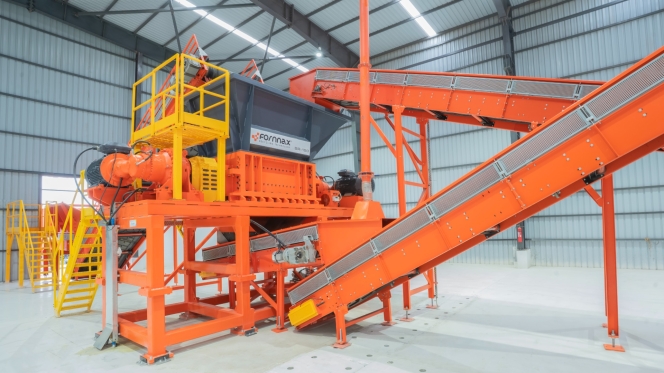
Fornnax has officially launched one of the world's largest integrated hubs for recycling innovation: a New Product Development centre and demo plant spanning over 12 acres. This facility is a critical milestone in the company's strategic vision to become a global leader in recycling solutions by 2030. It is designed to accelerate the advancement of recycling technology through a comprehensive, customer-focused approach.
The centre’s core function is its New Product Development framework, which is built upon a meticulous Gate Review Process. This system ensures precision from conception to completion. The journey begins with market research and ideation from the Sales and Marketing team, followed by a strategic review by the Leadership Team. The Design Team then creates detailed plans that are evaluated by Manufacturing, Service and Safety teams. After final approval, a functional prototype is built and subjected to a rigorous six to eight-month validation phase. The process concludes with design optimisation for mass production, officially launching the equipment for the global market. This method not just upgrades Fornnax's shredders and granulators – enhancing their capacity, energy efficiency and operational availability to 18–20 hours per day – but also validates the equipment for up to 3,000–15,000 hours under real-world conditions
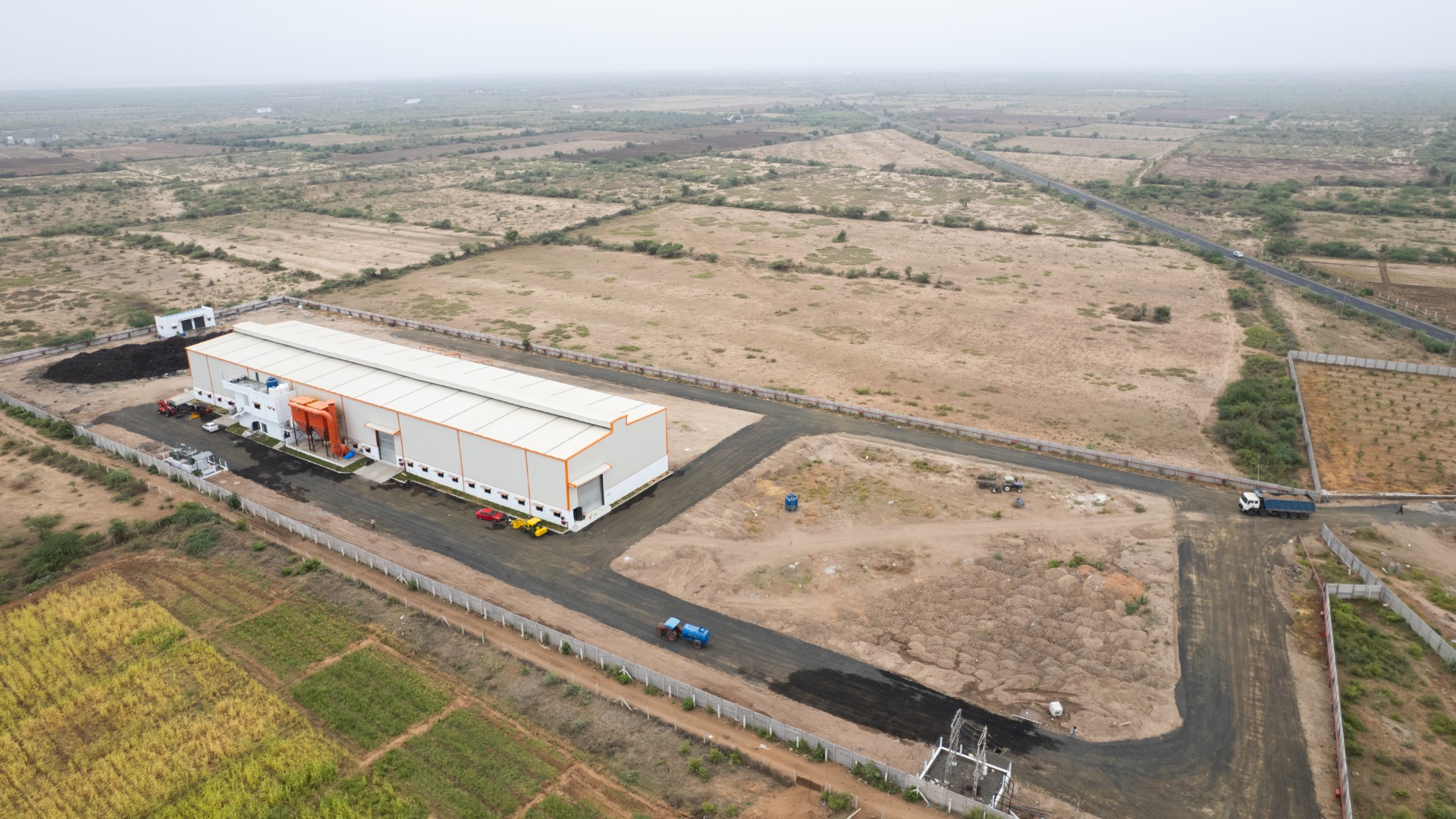
A key feature of the facility is its open-door policy for clients. Customers can bring their specific materials to the demo plant to test equipment performance across various machines and conditions, providing a risk-free environment for informed investment decisions. The centre will also drive research into emerging recycling applications, such as E-waste, cables and lithium-ion batteries, where specialised engineering teams will conduct feasibility studies to design tailored solutions.
Beyond technology, the facility includes an OEM training centre dedicated to developing a skilled workforce. The programme trains operators and maintenance engineers, who gain hands-on experience before being deployed to support Fornnax's customer base. The company will also deliver comprehensive corporate training to domestic and international clients, empowering them with the expertise for optimal plant operation and maintenance. By uniting R&D, testing and training under one roof, Fornnax is establishing a powerful foundation to scale its offerings and lead the next generation of recycling technology.
Jignesh Kundariya, Director and CEO, Fornnax, said, "Innovation in product development is the key to success of becoming a global leader. With this new facility, we now have the speed, flexibility and controlled environment to design, test and validate new technologies in just six to eight months, something that would take significantly 4–5 years at a customer site. Each machine will undergo validation according to global standards, with every critical part and assembly rigorously tested under Engineering Build (EB) and Manufacturing Build (MB) protocols. Our goal is to empower customers with clarity and confidence before they invest. This facility allows them to test their own materials under real-world conditions, compare machines and see results firsthand. It’s not just about selling equipment; it’s about building trust through transparency and delivering solutions that truly work for their unique needs.”
Smithers to Expand Rolling-Resistance Testing Capabilities in China
- By TT News
- November 21, 2025
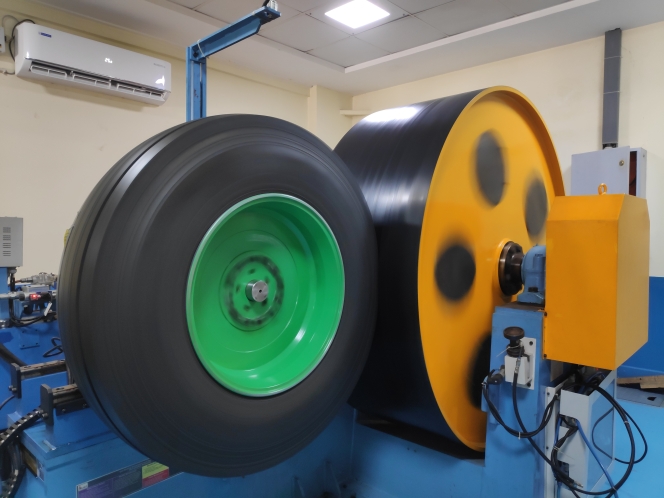
Smithers, the US-based testing and consulting group, is expanding its tyre testing operations in China with three new capabilities designed to better replicate real-world driving conditions. The investment will enhance the company’s rolling-resistance testing at its Suzhou tyre and wheel centre, strengthening its offering to global carmakers and tyre manufacturers.
The new features focus on factors that can influence vehicle energy loss, range, and overall efficiency—a growing concern as regulators tighten standards and EV makers push for longer driving range.
One new capability will allow rolling-resistance testing to be carried out with variations in slip and camber angles for passenger car and light truck tyres. Standard tests are performed at zero degrees, but even small changes in wheel alignment or body movement during real driving can affect energy consumption. The enhanced system lets customers study these effects and refine tyre designs accordingly.
Smithers is also adding high- and low-temperature rolling-resistance testing for truck and bus tyres, an extension of the temperature-controlled testing it introduced for passenger tyres in 2022. The company said demand has risen as manufacturers look to understand how cold weather affects range—a key issue for electric commercial vehicles.
A third new service will allow tyres to be tested together with chassis components such as half-shafts and brake discs. This gives OEMs independent data on how these parts contribute to overall resistance, helping them to identify where energy is being lost and to fine-tune vehicle efficiency.
All three capabilities are expected to be online by 1 December 2025.
“Smithers is seeing increased demand on a global scale for testing of tires and vehicles that more closely mimics real-world conditions,” said Derek Read, Vice President of Asia Pacific / Global Development, Materials Science and Engineering, Smithers. “These new capabilities are strategic investments into the refined, scenario-based testing our clients require to improve both tire and tire-chassis-vehicle system performance.”
Autonomous Robots Transform Continental Retreading Operations
- By TT News
- November 19, 2025
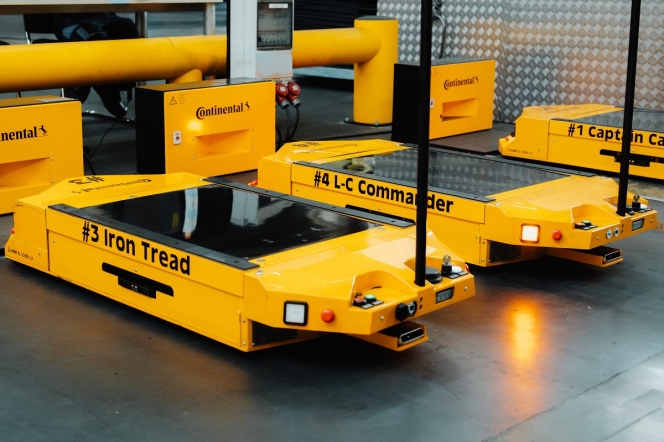
Continental's Hannover-Stöcken plant is pioneering a new era in sustainable manufacturing by seamlessly integrating advanced robotics into its core operations. Since their deployment in March 2025, a team of seven autonomous mobile robots (AMRs) has become the central nervous system for material transport, fundamentally reshaping the workflow for retreading truck and bus tyres.
This shift to automation has profoundly changed the human role on the production floor. Employees, once tasked with the physically strenuous job of manually moving heavy tyres using cranes and trolleys, are now focused on more cognitively demanding responsibilities. Their expertise is directed towards machine setup, process oversight and meticulous quality control, making their work more ergonomic and skilled.
The AMRs operate with sophisticated independence, navigating the production hall using a fusion of sensors, 360-degree cameras and AI-driven software. They efficiently ferry ‘green’ tyres between critical stages: from the building machine, where fresh rubber is applied, to the curing presses for vulcanisation and finally towards inspection. This automated coordination is digitally linked to the plant's order system, allowing for dynamic routing to optimise workflow and manage capacity.
This initiative is a cornerstone of Continental's global strategy to modernize tyre production through digitalisation and smart automation. The success in Hannover has already inspired the rollout of similar robotic solutions across the company's international network, from North America to Asia. The move aligns perfectly with the plant's sustainable mission, which is the ContiLifeCycle process itself. This process breathes new life into used tyre casings by carefully inspecting them, applying new tread rubber and vulcanising them to create a product that performs like new. The environmental benefit is substantial, as up to 70 percent of the original tyre's material is reused, significantly conserving resources.
The human element was crucial to the project's success. Continental ensured widespread employee acceptance through comprehensive training and even involved the workforce in christening the robots with creative names. This thoughtful approach has cemented the AMRs not as mere machines but as valued teammates in a shared mission to make tyre production more efficient, sustainable and future-ready.
Felix Hantelmann, head of the ContiLifeCycle plant, said, “Self-driving robots have been supporting our production workflow for six months now. They handle simple, repetitive transport tasks such as moving a tyre from one point to another. The robots are directly connected to our digital order system, so they know exactly where to go and how to coordinate with each other to get there. They are a valuable addition to our daily operations and help create a safe, efficient and ergonomically optimised production environment.”
Continental Deploys Vacuum Tech For Real-Time Tyre Wear Particle Analysis
- By TT News
- November 18, 2025

Continental's leadership in reducing tyre wear is fundamentally driven by its pioneering research into how particles are generated. A pivotal element of this strategy is the recently concluded OLRAP project, a collaboration with the Technical University of Braunschweig that broke new ground in real-world particle analysis. The research team engineered a complex experimental vehicle, outfitting it with a custom vacuum system and sensitive particle sensors. This innovative setup enabled the real-time collection and analysis of airborne particles directly at their source – the rolling tyre – under actual driving conditions. The resulting data, which for the first time correlates specific driving dynamics like aggressive acceleration and hard cornering with particle emissions, provides an unprecedented understanding of wear patterns.
This deep, data-driven insight is what directly fuels Continental's product development. By knowing precisely how and when wear occurs, engineers can make targeted optimisations to tread patterns and rubber compounds. The objective is to systematically design tyres that shed less material, thereby directly reducing their environmental footprint from abrasion. This development process rigorously maintains the critical safety and performance standards that drivers demand.
The tangible success of this research-to-development pipeline is confirmed by independent analysis, which shows Continental tyres abrade 11 percent less material than the competitor average. Furthermore, this proactive research and development strategically prepares the company for upcoming regulations like the Euro 7 standard, which will impose limits on tyre wear emissions. Beyond its own laboratories, Continental extends this commitment through cross-industry efforts, co-chairing the Tire Industry Project and contributing to public initiatives aimed at capturing tyre particles from road runoff. Through this integrated approach, Continental is leveraging fundamental scientific discovery to create more sustainable mobility solutions.


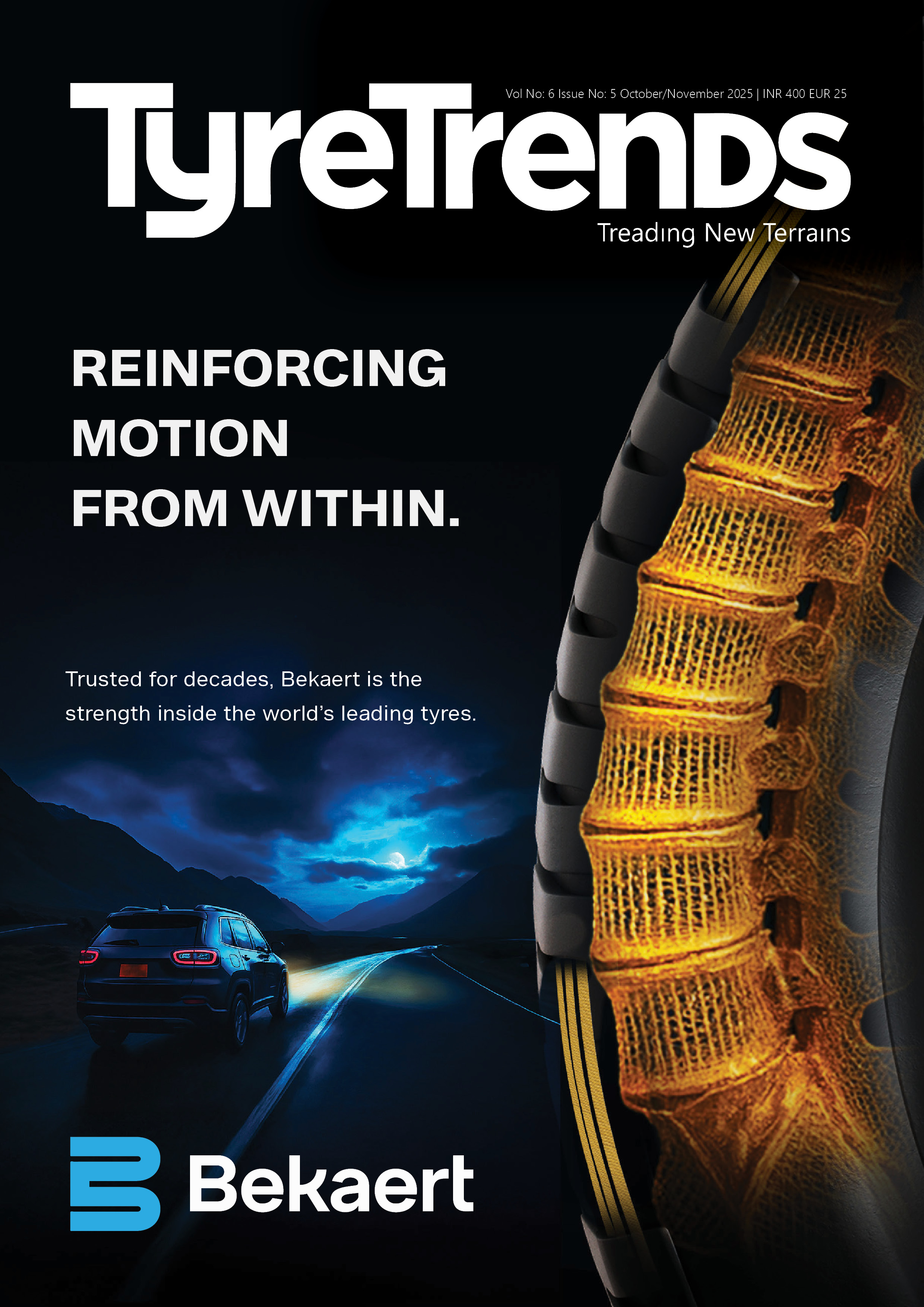




Comments (0)
ADD COMMENT